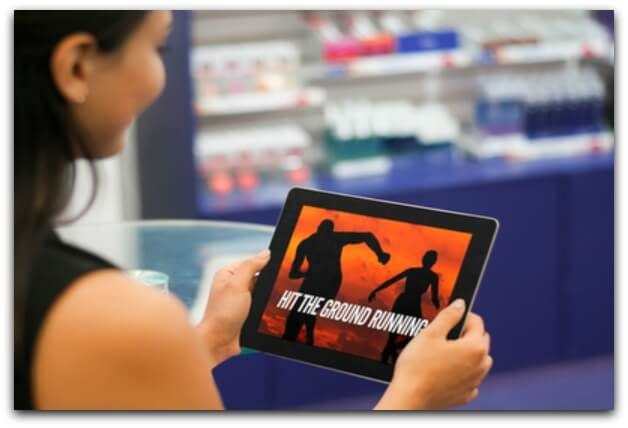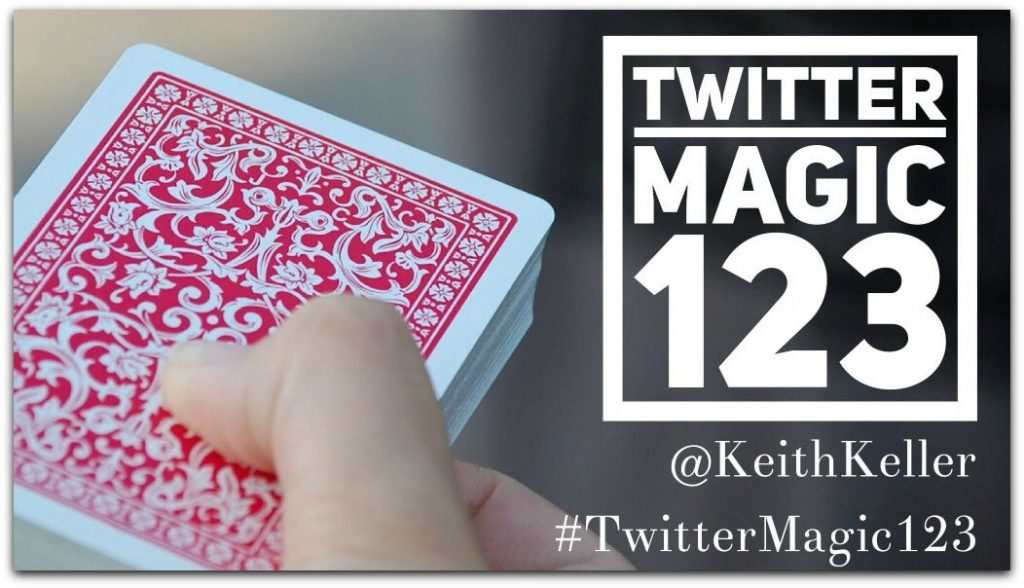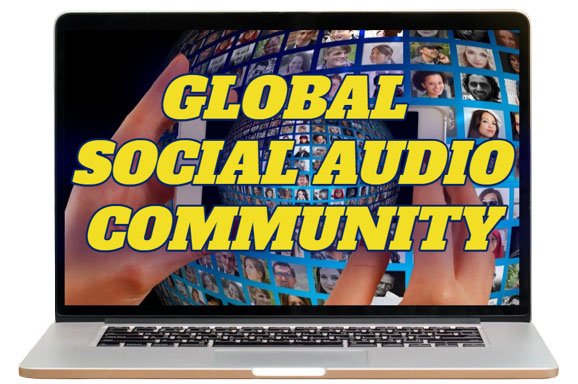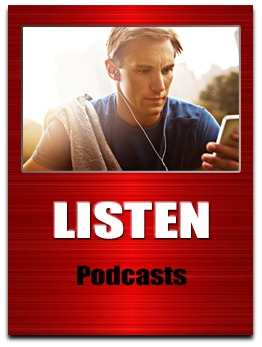HOW TO HIT THE GROUND RUNNING
A Podcast About How To Use Twitter To Market Your Tourism Brand.
In this episode Keith Keller (@KeithKeller) & Tracey Gayner (@AskGadgetGirl) teach you HOW TO HIT THE GROUND RUNNING with your Twitter marketing.
Keith discusses 5 key elements here:
(1) Be The Resource Not The Salesperson
(2) Write A Strong Bio
(3) Add A Photo Or Company Graphic
(4) Remember The 80/20 Rule – It’s Not All About You
(5) SHARE, SHARE, SHARE – Then Ask.
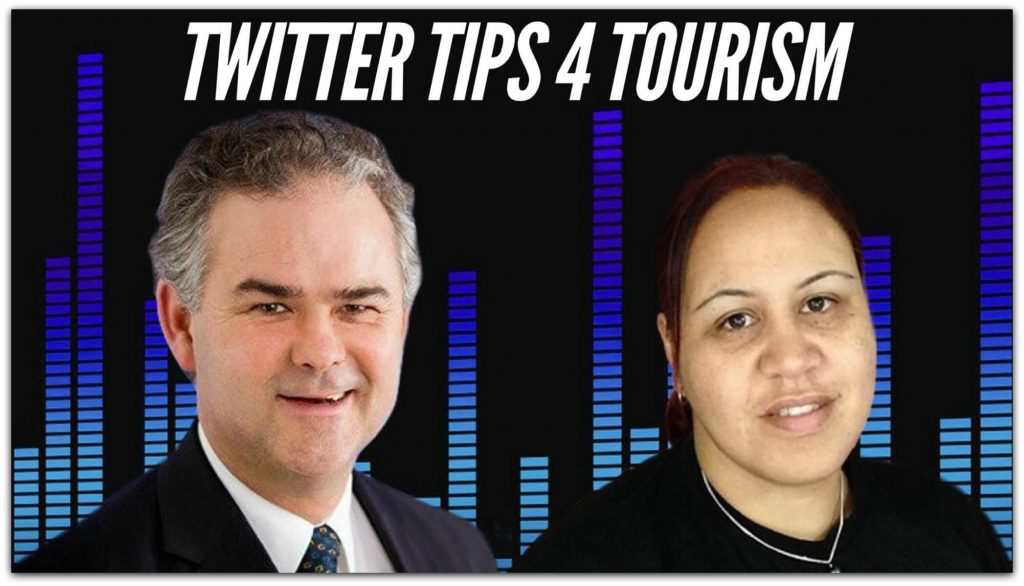
HOW TO HIT THE GROUND RUNNING
Keith Keller: Hey it’s Keith Keller, Melbourne Australia and this is part 2 of Twitter Tips 4 Tourism - a podcast about how to use Twitter to market your tourism brand. The first episode was called “Setting the Scene”, which seems like weeks ago now, but now I’, back with part 2 about how to “Hit the Ground Running”. I want to give you some really powerful strategies today that you can use almost immediately.
But before I do that, I want to introduce my friend Gadget Girl, Ask Gadget Girl Tracey in Auckland because she’s got a fantastic story. We’ve only known each other less than 60 days, she’s using these techniques, she’s got 2000 more followers, she’s got all these contacts in Montreal, in London and New York and all these groovy people all around the world. So Tracey, welcome to the podcast and tell me how you’re using Twitter and how it’s really changing your business model.
Tracey Gayner: Hi Keith and thank you very much firstly for even inviting me here today. How am I using Twitter? Well, before I wasn’t, before I met you I thought that what I was doing was right and I really wasn’t. I mean, I had a Twitter one that I had signed up for like ages ago, I think maybe 2009/2010 and at that stage that one was just over 500 and I remember doing a little happy dance thinking wow I’ve got 500 people - awesome and then January this year I started @askgadgetgirl.
So I started another company, a brand new company and when I met you around the end of April - it was about 170 odd followers and then when I met you and I started to follow your amazing tips. I suddenly went from 171 in 3.5 weeks I grew it to over a thousand people and now as you say another 30 days later or less really, it’s now over 2000.
Keith: 2121 followers today, as of part 2 of the strategy and that’s less than 60 days since we even met and this is why I’m so passionate about Twitter and why I’m so passionate about putting what I know down into a podcast format.
The first as I said last week or a few weeks ago was ‘Setting the Scene’ - very generic idea about we’re doing a series of podcasts probably 10 about this idea.
Today we’re going to hit the ground running and I just wanna work you through a 5 step plan, I’m gonna just basically and briefly explain those and then I’m going to decode.
(1) Be The Resource Not The Salesperson
(2) Write A Strong Bio
(3) Add A Photo Or Company Graphic
(4) Remember The 80/20 Rule – It’s Not All About You
(5) SHARE, SHARE, SHARE – Then Ask.
Have you been employing these techniques Tracey, yourself? Have you seen them come to fruition for you?
Tracey: Oh I certainly have. I have to say that my Simple Steps one my @simplestepsnz didn’t have a photo of myself. I had a company graphic there and obviously that didn’t really work that well. So when I changed it I started to see that both that one and @askgadgetgirl started to rise because people were connecting with a person rather than just a graphic. But the company did well for a while too, I must say for the Ask Gadget Girl one.
Keith: There is significant evidence to prove that a graphic is better than nothing, but that a photo of yourself showing that you’re a real person that people can relate too does really really well and that’s part 3, we’ll come back to that because your piece of the pie is graphics and I wanna play on how important graphics are for Twitter.
… but the first thing I want to talk about and this is a what a lot of people miss a lot of people get this wrong.
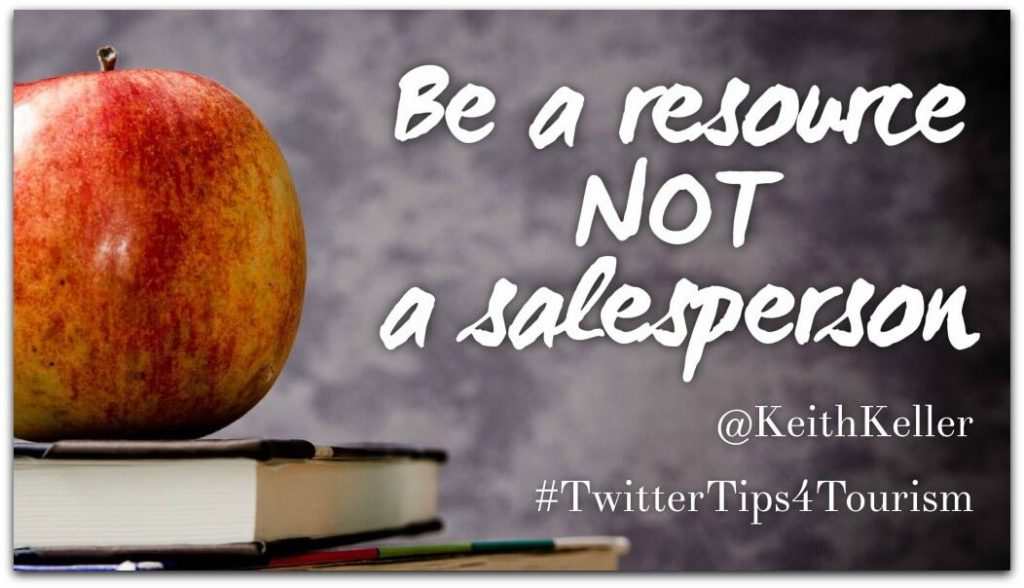
Be The Resource Not The Salesperson
People believe that they’re setting up a Twitter account just to simply sell stuff. They’ve got a shop, well we’re get more people in the shop, they’ve got a book and they wanna get more people to buy the book. Well the end result of that might be that people might buy your book or they might come to your shop, but the worst thing you can do is just simply say buy my book, come into my shop.
The best thing to do is say here’s a great resource that I’ve found, a lovely video, a friend of mine has written a book, I’m going to a speaking gig tomorrow - I’ll meet you there. Here’s a lovely graphic that my friend made, here’s a lovely song you might like to pick you up in the morning and what happens there, this is sort of counter intuitive to a lot of people, but what happens is you build this enormous cyber-karma as I call it.
This enormous cred in the industry to say wow it’s worth following Keith because he shares great stuff and when I’m near his shop, I’ll go in cause he’s such a nice person or when I’m in a bookshop, I’ll get his book because he’s such a nice person, as a direct result of your activities. Not as a direct result of pounding them over the head to say buy my book. Have you explored this idea of being a resource other than just simply selling your own wares? Have you seen a shift?
Tracey: Yea I really have, before and although people can’t see me I’m nodding really furiously to what you’re saying because the amount of, in the past 60 days that I have seen peoples Twitters work when they’re sharing stuff which becomes a resource.
If you’re just doing the hard sell it’s not going to make you anymore successful not everybody has you know, like you Keith, I mean you’ve got over 40,000 people but you’ve built that on this approach of here let me share what you’re doing and then later on I’ll share what I’m doing and the worst Twitter ones that I have seen and are lower numbers too actually.
Lower numbers of followers because all they’re doing is pretty much saying buy my book, buy my wares, come into my shop - don’t just browse, purchase something and walk out. That’s not success.
Keith: It’s not, it’s definitely not what Twitter’s about and I know it’s counter-intuitive to alot of businesses but as you follow this series of podcasts along you will see how it gradually builds and you are right, I’ve now got 42,400 followers and I’ve built that up over time by sharing, by being a nice person, by helping others first and people reciprocated and I keep using this phrase ‘Cyber-Karma’, it’s a very good phrase for me, lots and lots of people helped me when I need it.
What I call my place in the sun. I don’t speak very often anymore. I don’t write books anymore. I don’t do something everyday, but when I do people come out of the closet and say mate you’ve helped me before - I owe you one, you’ve got one in the bank so you just let me know if you ever need anything because you’ve helped me out so much and that’s what I really want Twitter to become for you.

Write A Strong Bio
The second one I really want to talk about is the idea of writing a strong bio. Now I want to hear what you’ve seen in the last 60 days because I often see google me, I can’t be bothered writing a bio, I just haven’t got time, can’t be bothered why should I bother?
You find out and I’m thinking ok, no worries I mean I’ve gone to the trouble of clicking on your link and you’ve got my attention and I just need a little bit of a clue as to what you doing to decide whether I follow you or not and if you make it hard for me or anyone else it might just be too hard because we’re busy, we’re all very very busy. It’s got nothing to do with laziness or anything else it’s just got to do with the fact that we’re busy and we need a bit of a teaser a bit of a clue. So my bio is Australian Twitter Marketing Guy, the Aussie Twitter Marketing Guy - I think is what I currently have on my bio.
So now you know that I’m an Aussie and I teach Twitter, now if that’s of interest to you please follow me, if it isn’t you’re doing me a great favour if you don’t follow me because I don’t want people following me who are not interested in what I’m doing. That’s why I’m proud that I’ve got 42,400 people that dig my stuff. I haven’t got 442,400 innocuous followers that just click anything. I’ve got 42,000 dedicated followers that retweet me, that listen to my stuff that read my blogs, that come into my gigs. That’s what you want and that’s what a Twitter bio does.
Have you seen this work in both directions Tracey, where people have a really stupid bio and have you seen anyone with a really good bio?
Tracey: I have, it’s funny that you should mention that. I’ve also got a question for you too around bios but it’s really interesting how many people if they have a website they don’t put it in, so they miss out their own opportunity for people to click through their profile and actually click straight through.
For example yours socialmediacoaching.com at least I could see who you are, it says that you’re Australian, I mean mine says hi I’m Tracey kind of thing, what I do and that I love technology - so obviously the stuff that I’m about to do is going to be probably about technology. education and community.
But people just, there are some really strange ones I do understand especially if you are part of a company and it’s or your doing a personal twitter that you might have to put RTs or Retweets does not equal endorsements, which is absolutely fine but there are some that say or try to be funny and they’re really not and they’ve got this website link that isn’t working for them because it doesn’t go anywhere.
Keith: Let me pick up on what you’ve just said there, I didn’t mention this before - this is very very important. You’ve got, on your bio you’ve got the opportunity to add a website, you’ve got an opportunity to add a functioning clickable link.
Most people, a lot of people do not the opportunity to use that or they put in a link that they don’t check very often and suddenly it stops working.
So again if I’ve come to your page what I personally do, I do this with everyone that I follow back mostly, I check what you’re doing and I go to your website and I just check if there’s any synergy with what we’re doing and if there is then I’ll start a conversation cause I want, as I said I want active followers that are engaged and that are in alignment what with I do - not always I mean it’s very hard to follow everyone back and it’s very hard to be strict on that but my gut feeling is that the best idea is to say we’ve got an alignment, you’ve got a nice blog I’ve seen it, the graphics are lovely, there’s some synergy here, let’s chat.
You’re not following numbers for the sake of numbers and if you don’t put in a graphic or a nice bio or a link that works then you’re really losing the opportunity to connect with someone that could become your next best friend, your next JV partner (Joint Venture) partner, your next client.
They might run a conference and you might be a perfect speaker for them. They might want to buy your book, but they don’t know about it - so every person that comes to your site could be a potential client, friend, JV partner, referral network, possible speaking gig or all three or four of those. So I’m glad that you mentioned the link. Is that the question that you had? or did you have another question about something in the bio?
Tracey: I do actually, because the bio is so small I mean isn’t it the same as a tweet - 140 characters.
Keith: 140 characters, yea.
Tracey: yea it’s really tiny, so I just wanted to ask seeming that Twitter has so many things about hashtags, do you recommend… are hashtags in bios, able to be picked up by places such as Google?
Keith: Well, the idea of a hashtag in a bio, my gut feeling, my honest opinion about hashtags in bios - they’re a bit of a waste of time because you’ve only got ten words and you don’t want to waste those words with a hashtag. Some people hashtag the word that they want to include #socialmedia #strategist #melbourne #australia and that’s fine because those hashtags work and you’re getting hashtags in there with words but a bio is such precious real estate.
My opinion is that it really should be a focused easily read-able bio that you can just simply glance at it to say Social Media Strategist, Melbourne Australia. You know, you don’t need to make them hashtags because they really don’t function very well in the bio format. By all means have a go, try these things but my gut feeling is that’s what works better. What are you doing? What have you seen work?
Tracey: Well currently now since I’ve gone on this Twitter train, I’ve got about 5 accounts including company ones to look after and I’ve done ones where it does have the hashtags in and ones where they do not have hashtags and I think you’ve only got one impression, you’ve only got one chance to make that impression - so make it a good one.
To me so far it’s more like well if you’re gonna put a hashtag in make sure that the word that you’ve got after it counts for something that you’re going to or the people are going to look for or search for.
Keith: Yea, I agree, so we’ve talked about the idea of being a resource and not a salesperson, we’ve talked about the importance of bios and having a link in your bio and the very very debatable topic about whether you should put hashtags in your bio. I’m very happy to be proven wrong, I’m not infallible, but I’m just sharing my thoughts on that.
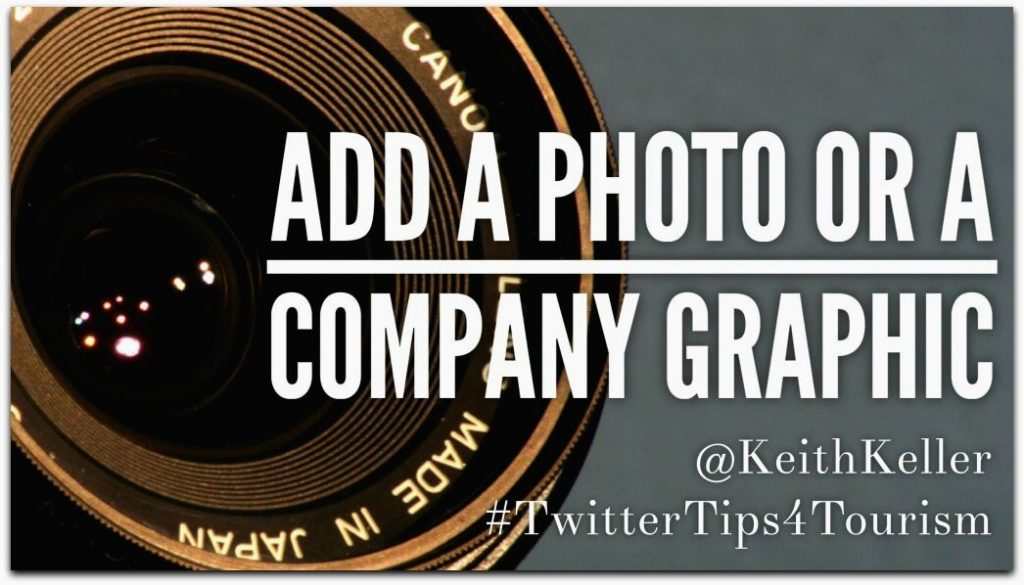
Add A Photo Or Company Graphic
The third one, which I think is very important probably the most important part - there is significant evidence to prove that if you put your photo on a Twitter account you will get a much better engagement ratio then if you do nothing and somewhere inbetween is the idea of a company graphic, which indicates what the company is about, but doesn’t have that personal element. What have you found here? Have you found people still using the egghead as we call it? Do you see people still using graphics, do you resonate when you see a persons face?
Tracey: I definitely do resonate when I see a somebody’s face and for every person that follows me because I don’t have a huge following yet, I mean 2000 is quite a lot, but it’s not as big as Keith’s 42,000. I wanna see who the person is, what they tweet about and whether or not it’s just a Twitter fake account or something that I need to block or I need to mute or something that doesn’t at all resonate with me.
I’ve seen a lot of the ones that say and I do not follow them, I don’t follow them are the ones that say you know get a thousand followers in 10 days, who cares if you get a thousand followers they’re not going to be actively engaged or they don’t care what you’re doing, they’re not going to concentrate on what you’re doing, they’re just wanting to get the numbers of the followers, whereas for me the followers are actually real.
Now it’s funny that you should mention company graphics verse photo, like I said my one for over four years just didn’t have, well it had a company graphic - I think I had the logo on there. But when I put my face on there or the profile photo, then I and I made sure that I would reply to people, even if they were maybe not real, then actually that got me much, much better engagement because they could see that I was actually a real person, that I would take the time to reply.
Keith: That’s a very good case in point because you’ve been using Twitter, this system for less than 60 days and you’ve noticed, I know because we’ve chatted many times about this, you’ve noticed your engagement go through the roof, with real people.
Tracey: Yes definitely and..
Keith: Not just lots of followers, you’re chatting to real substantial, interesting people all over the world.
Tracey: Yes and sometimes when they direct message me, I don’t even check their profile first I just you know reply and then I look at it and go - wow these guys have got over 40,000 or these guys have got 100,000, but yet they’re still direct messaging me, which is really great but the interesting thing is, is that they are real people, people forget that people are on Twitter and that they’re REAL people, there not just and they want to engage with someone that they can see, someone that they can trust and have a sense of, it’s amazing the sense of community.
Keith: It is isn’t it, it really is and I’m so pleased that I’ve found another Twitter convert because I love it, I just love it and my whole business model has changed since we’ve been using it.
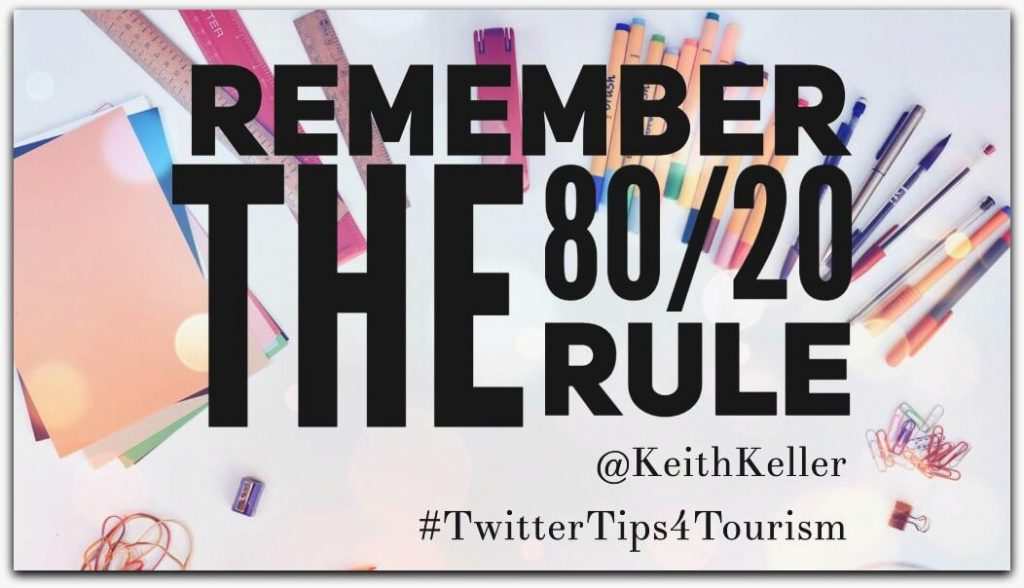
Remember The 80/20 Rule – It’s Not All About You
You know the thing that’s really interesting about Twitter is a lot of people including the first part only Tweet about themselves, they only tweet, they only use it like Instagram or Facebook, they just sorta tweet about what they’re doing but I have found robust examples of people using the 80/20 rule, what that means is that for every time I tweet about myself, I tweet four other things that are not related to me for pure community building so by finding articles that you can tweet for others you build enormous credit - have you seen this play out? Do you do this yourself?
Tracey: I do indeed, when I mentioned that I have two primary accounts that was because I don’t, I use the Simple Steps NZ as a bit of a control one so that I can see whether or not what I’m doing is actually working.
So Simple Steps went from 500 to 1200 now, I still do actually ‘talk’ on it but I don’t always get a chance to interact with that as much as the other one. When I first followed the 80/20 rule, I definitely did the 1 in 10 and I remember pressing send the first time you know over a month ago going no ones going to read what I’m going to be tweeting about, my blog posts, no ones going to care and today I sent one through and someone replied and said oh your link isn’t working Tracey, you know and I was like - hang on, you know a month later people are actually not just an impression, they’re noticing and their actually saying hey look your link isn’t working and I fixed it - it seemed that something was little bit odd about it, but what it said to me is 1) people are actually noticing and they’re not minding that out of every 10 or something you know whatever, how many ratio is that I do, they’re not minding that some of this stuff that I’m putting in is actually mine.
Keith: You’ve said a very interesting thing there, I personally recommend 4 to 1 because it’s easier to do, you’ve often heard me use the 10 to 1 rule, which is what I absolutely and personally do myself. One of the hidden benefits, this is a bit of a secret - one of the hidden benefits of tweeting lots and lots of stuff about other people is that it raises the game when you tweet about yourself.
When you tweet something about yourself you’ve got ten other posts that you can instantly compare the quality of your material too and the goal there and this is a bit of a secret sauce is the goal is to make your material as good or better than the tweets that you tweet about for others that you find exciting and I’m proud to say that since I’ve met you and our graphics have gone up through the roof that my tweets and my blogposts have gone up that notch.
So that when I cross reference my blog posts with other peoples blog posts, there’s a similar quality level and that’s really lovely because if you’re tweeting ten times a day and only one of those is about yourself you can be sure that that one is of similar quality to the other ten people that you admire and guess what, they’re tweeting you too because if you’ve tweeted ten things about ten other people those ten people are looking to come back to you to retweet your stuff, so we’re helping each other it is like a community building project isn’t it.
Tracey: It sure is and I strongly suggest to people look quote tweets, not just retweet but if you actually like what Keith has written for example Twitter Tips 4 Tourism for example and he’s just written a post or Twitter Magic 123, then actually quote it and say I follow this or I really resonate or I really think that this is making me more successful because, because people want to hear what other peoples thoughts are of their stuff.
Keith: There’s a phrase at the moment which is going around called Content Shock, I don’t know if you’ve heard this phrase but Content Shock is that there’s so much material out there on the internet we’re all a bit glazed over, aw yea here’s another blogpost from Keith, ok his stuff’s alright but jeez you know he did one of those yesterday and so people are going ah another one, I haven’t read the last one, so if you can make sure that your stuff is great quality and then you build a community where people say hey I know you’re busy but look this is really good, I mean this is really good! It separates you from the pack because we’re all chunking out stuff and lots of people are just throwing it out there, without any forethought and this is exactly why I’m doing this series, it’s exactly why I’m doing this series. I want people to be able to listen to this podcast in 10 or 20 minutes and get ideas that they can use today.
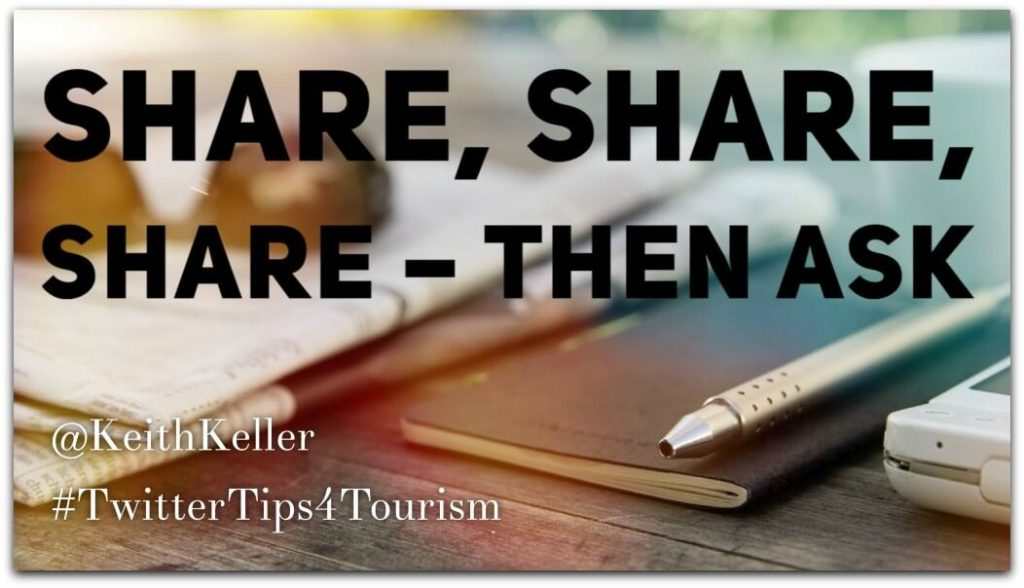
SHARE, SHARE, SHARE – Then Ask
So we’ve got four we’ve done so far, be a resource, write a bio, add a photo, remember the 80/20 rule and it wraps around a really lovely phrase which I call - Share, Share, Share, what @GaryVee calls give, give, give. He wrote a whole book on this called “Jab, Jab, Jab - Right Hook” and what he’s really saying is give, give, give - then ask.
In order to ask for the sale you need to earn the right to ask, if you just simply say on your Twitter account - buy my book, come into my shop, 20% off massages today, we’ve got hamburgers at 50% off, if you come in before 2 O’clock, if you come in after 6 o’clock the price goes up, if your whole Twitter account was just a series of sales then you would have virtually no followers and if you had any followers at all there’d be no engagement.
I wanna give you a really cool example for this, there was a really cool guy (this happened a few years ago) there’s a really really cool golf shop that did, this is really in the early days of Twitter and what they did is they did is during the Australian Open Golf Tournament, which was in Melbourne, on the hour, every hour they gave a progress of the golf score.
Tiger Woods is winning - he’s 3 under, such n such is 2 under and such n such is lagging behind here and there and then once a day at the and of the day and they’d go look you’ve enjoyed the golf scores and by the way if you play golf here’s a voucher for 10% off shoes and half a dozen free golf balls. So because people are following the golf scores and they’re loving it, listen I just check in once an hour to see who’s winning, what happened in the last round - then once a day they say here’s a link to 10% off any golf shoes in the shop and half a dozen free golf balls, suddenly this company got enormous cred because people are saying, I’m following you anyway and I do play golf that’s why I’m following this and I do need some golf balls and I wouldn’t mind getting a pair of shoes. So it’s related, you’re selling stuff that you’re not hitting them over the head with it.
Tracey, tell me what are you thinking of these five in general and how you’ve used them overall and let’s wrap up and get on with our days and let people get on with theirs.
Tracey: Ok Keith, well just basically the last one is actually to me, I mean I’ve spent over 20 years in community service through education and things like that and not just technology but what I mentioned before was the Social Proof, so if someone retweets you, someone quotes the tweet - they are providing the proof or backing you but they’re not you just spouting the same thing all the time, so you know, sharing the great articles, interacting with your followers, share, share share - remember the last and the biggest point out of those five is like you say, be the resource not the salesperson, people will come to your golf shop because they know that you know what you’re talking about - you are the resource, they don’t have to google it, they’re just be like hey I just have to jump on Twitter or else I just have to you know, give Keith a call because I know what he’s going to tell me is pretty much the information that I need, you know it’s about sharing that information and resources and once you do actually put yourself out there, you know I only maybe tweet 3 or 4 articles a week but I keep those and I constantly just those 3 or 4 articles for the week and people give me feedback and that’s really what you want, you want the feedback and you want to be able to share things and I’ve really really enjoyed being on this Twitter train, I have totally and utterly loved it, it’s opened up a whole new world of social media to me and I’m definitely keen to see where this train or where my next destination will go.
Keith: You’re my social proof in a way aren’t you? Because you’ve been following my system and it’s working, you’re getting better quality guests for your blogposts, you’re getting lots of great people following you, you’re meeting lots of really cool people and that’s really what business is all about, it’s all about that movement and engagement isn’t it.
Tracey: Yea, it certainly is and you’re right, yes I am, I would say that Keith’s pretty much a mentor and I’m just astounded by, well you gotta put the work in - you can have amazing tips, you can follow every single subscription that you can grab a hold of, but you know if you don’t follow these five points like being a resource, writing that bio, adding the photo, doing that 80/20 rule and sharing - then it’s not going to get really where you want it to be.
Keith: Well let’s leave it there, I’ve got a head the size of an elephant now and it’s a great way to end the podcast. It’s working, I’ve developed a system, Tracey’s using it and you can take it from her and you can take it from me that it definitely works. We’re going to come back next week with another series of podcasts - we’re doing ten in total and as this series progresses we’re going to gradually let you know about a video series we’re doing about this, which is coming a little bit down the line. I’m doing gigs in New Zealand at the moment, I’ve got another one coming up later probably some gigs in South Africa, maybe some gigs in Canada and this sort of stuff all moves together, in this share, share, share environment.
Thanks again for listening and we’ll see you next week.
TWITTER TIPS 4 TOURISM (The Story So Far)
ADDITIONAL RESOURCES YOU MAY ENJOY
“TWITTER MAGIC 123”
Growth Hacking Your Twitter Marketing!!
(1) Follow First
(2) Follow Back
(3) Follow Up
OVER 30 MORE FREE PODCASTS HERE!!
www.TinyURL.com/TwitterPodcasts

